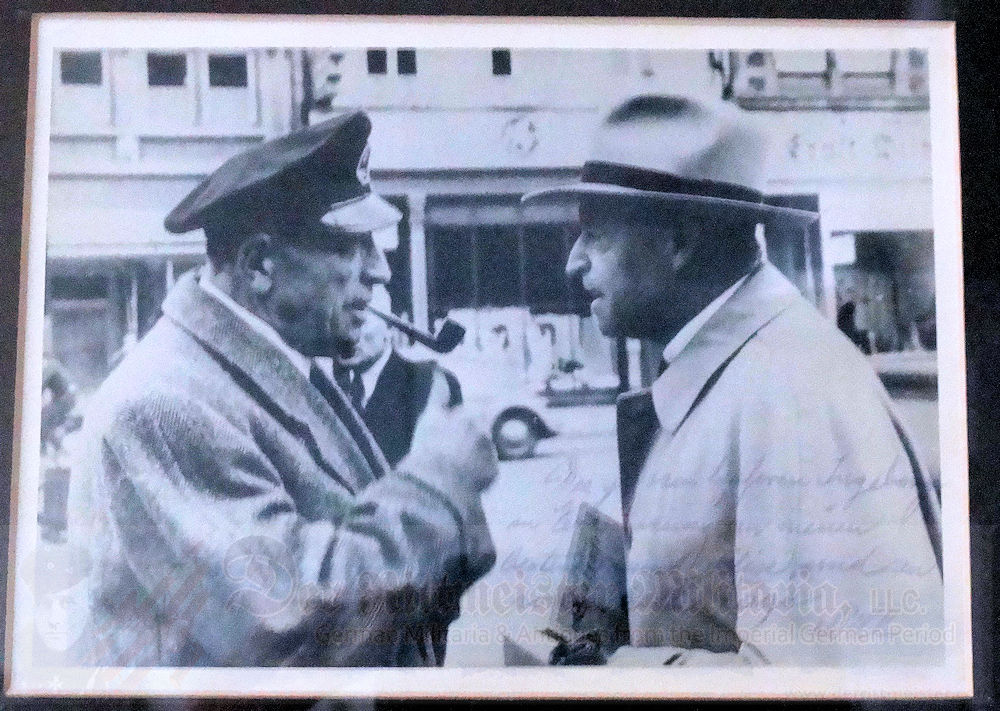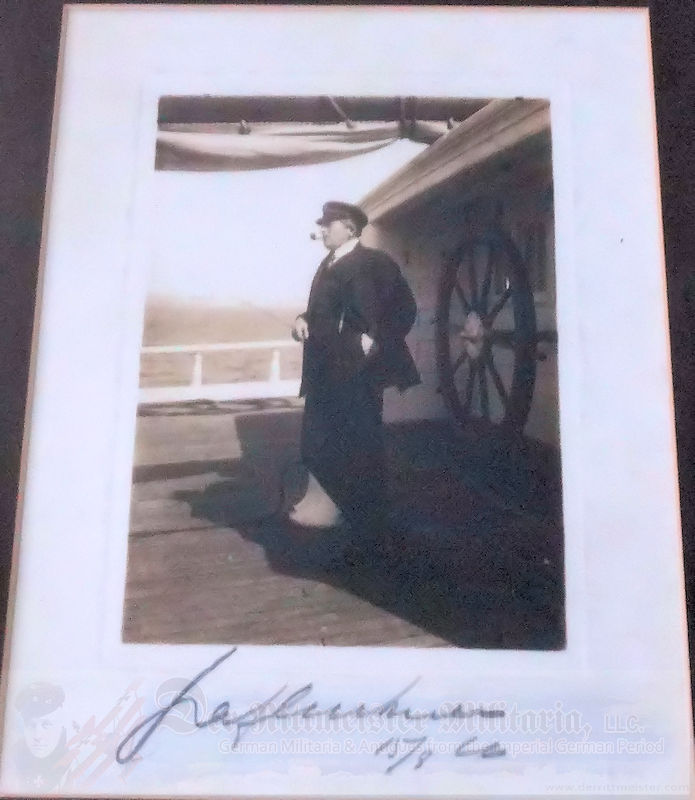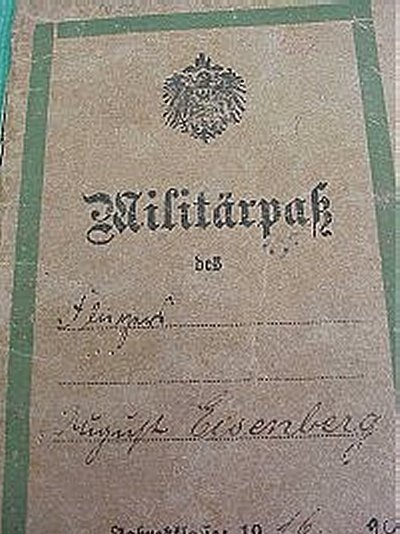Description
This is a beautifully arranged four-piece framed collection honoring Felix Graf von Luckner. The entire piece measures 28″ x 30 ½.” It is professionally mounted with a glass front and antique brown matting within its gold-toned, solid-wood frame. It features three photographs of von Luckner, along with a front page newspaper article. The front page is from the University of Michigan at Ann Arbor’s Michigan Daily, a student newspaper, and is displayed on the frame’s left half. The article is dated November 1, 1928 and titled “German Raider Speaks Tonight.” The article features von Luckner’s photo and announces his appearance at the U of M auditorium. It further states that he will be speaking to the audience about his adventures as Germany’s “Sea Devil,” the friendly foe of the allied merchant marines. The well-preserved newspaper measures 17″ x 21.”
The frame’s top right section features a signed photo of a well dressed von Luckner aboard a ship, casually smoking his pipe. The signed photograph measures 4 ¼”x 6,” and sits within a 6 ½” x 8 ½” white matte border that bears von Luckner’s signature. A 4 ¼” x and 6 ¼” professional photograph that features Luckner, Henry Ford and von Luckner’s wife, Ingeborg von Luckner, appears below the signed photograph. [The latter was taken in New York on January 11, 1928]. The frame’s bottom right section features a 4 ½”x 6 ½” candid snapshot of von Luckner and his friend “Bill,” along with a handwritten message in German. [We are unable to further identify the other gentleman, except to note that the handwritten note is signed Bill].
Felix Graf von Luckner (1881-1966) was one of WW I’s most interesting naval figures. To say that he was a colorful figure is an absolute understatement!
Von Luckner came from an aristocratic family and did not want to follow the life path required by his father. Instead, he left home at a young age and traveled around the world taking any number of physically-demanding jobs: working in a circus, as a lumberman, and many positions requiring heavy labor. His father wanted him to join the cavalry, but von Luckner said he would not return to his family until he could wear his Emperor’s naval uniform. He returned to Germany in 1911 and passed his exams for the merchant fleet. He joined the Kaiserliche Marine in 1912 and returned home as a naval officer. His first posting was aboard the S. M. S. Panther, one of the six-ship S. M. S. Iltis Gunboat Class that saw service off South America’s coast and in the Caribbean. With WW I’s advent, von Luckner found himself posted to the battleship S. M. S. Kronprinz Wilhelm. He commanded one of her main turrets, and acquitted himself well at 1916’s Battle of Jutland (Skagerrakschlacht).
He next was given his first command, the S. M. S. Seeadler (Sea Eagle). It was a highly unusual ship, a three-masted, steel-bodied sailing ship that had been captured by a U-Boot. It then was converted to a Commerce Raider that boasted two 105mm (10.5cm) cannons, as well as machine guns. Now war-ready, the ship departed from Germany in December 1916.
During its 225-day voyage, the S. M. S. Seeadler sank or captured fifteen allied ships. Von Luckner was very careful to preserve the captured crew members’ lives, for which he was greatly respected. His ship was forced aground in a bad storm during September 1917. He and his crew were captured and made POW’s by New Zealand. He, however, was not willing to remain a POW and led a daring escape in the New Zealand commandant’s speedboat. Unfortunately for the plucky von Luckner, they were caught and remained in New Zealand’s hands until the war’s end.
After the war, von Luckner wrote a book about his adventures. This brought him to Lowell Thomas’s attention, who then helped make him famous in the U.S. He visited the U.S., made many public speeches, and even met Henry Ford, who presented him with a car!
During the Nazi regime, he was recruited to join and publicly endorse Hitler. Had he agreed, he might have been awarded a high-profile job in the Kriegsmarine. He refused to rescind his status as a Free Mason, however, that and other anti-Nazi activities eventually led the Nazis to call for his death as the war was ending (fortunately for von Luckner, they were unable to carry it out). After WW II, he moved to Sweden with his second wife (a Swedish lady who also appears in one of the collection’s photos) where he lived until his 1966 death.
This is a great collection featuring von Luckner after his days in the Imperial German Navy, which he spent traveling with his wife and speaking all over the world about his victorious adventures and capture. The collection is in excellent condition and would make a great conversation piece for German Navy enthusiasts and general history buffs alike. [Extra packing will be required due to the nature of this framed piece of history].








